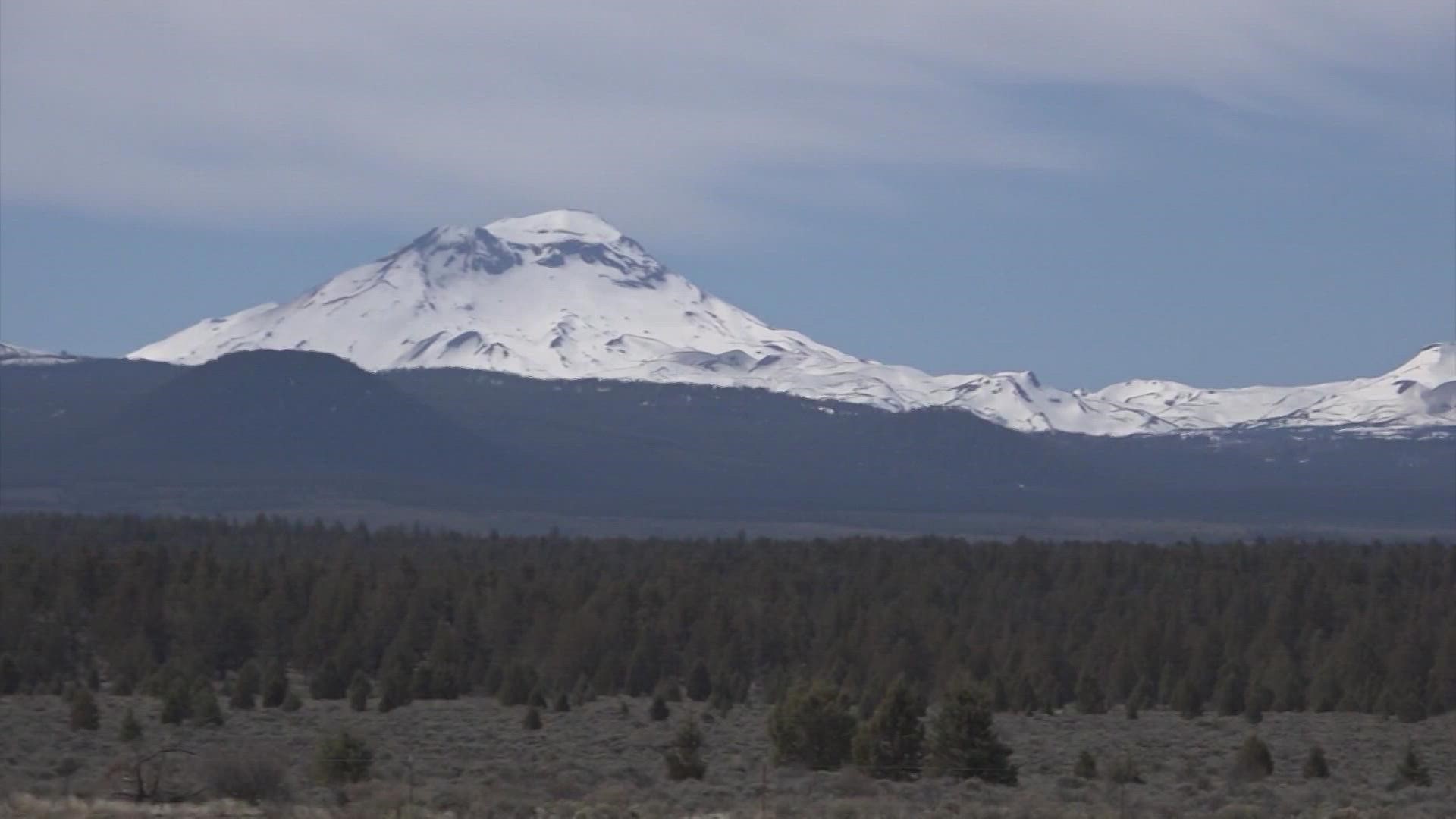The ground is swelling under the Three Sisters volcanic region in central Oregon.
The U.S. Geological Survey issued a statement that the rate of uplift in an area 12 miles across has risen nearly an inch between June of 2020 and August of 2021.
Yet, this latest uplift comes after some 25 years of activity. Scientists say it’s happening as lava is filling a space underground.
“The total is about 30 centimeters, which is about the size of a two-liter pop bottle,” said Emily Montgomery-Brown, a research geophysicist at the Cascades Volcano Observatory in Vancouver, Washington. “When this happens at volcanoes, there are often these pulses of lava. And they kind of push the top of the volcano out. It’s very slight. So, all of that’s happened in the last couple of months.”
Does this mean an eruption is on its way? Montgomery-Brown says that’s not expected. The uplift isn’t the only type of clue.
Early eruptive activity is usually accompanied by the release of volcanic gasses and a building drumbeat of small earthquakes. There have been some bursts of tiny quakes located inside the uplifted area, according to the Geological Survey.
The Pacific Northwest Seismic Network at the University of Washington in Seattle monitors these seismic signals throughout the Cascades - cutting its teeth during the 1980 eruption of Mount St. Helens. Seismic Network Director Harold Tobin said that there’s nothing concerning about the earthquake activity around the Sisters.
But if Sisters is showing signs of activity, what does that mean for other Cascade volcanoes?
“The individual volcanoes are all part of the Cascade chain,” Tobin said. “But they are all individual volcanoes — they have a separate sort of plumbing system of magma. But something happening down there at Sisters in Oregon doesn’t mean that Mount Rainier is going to change its activity.”

